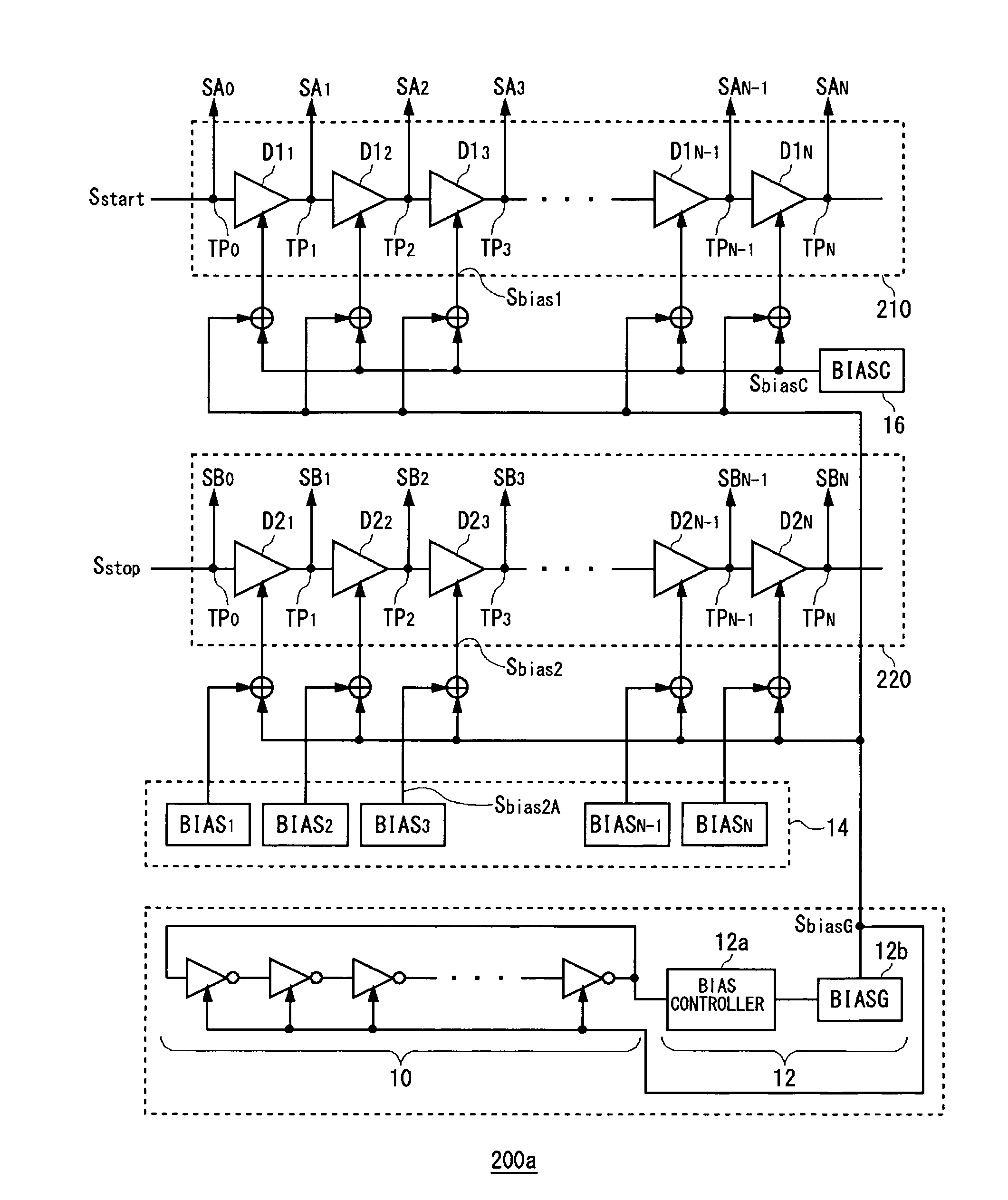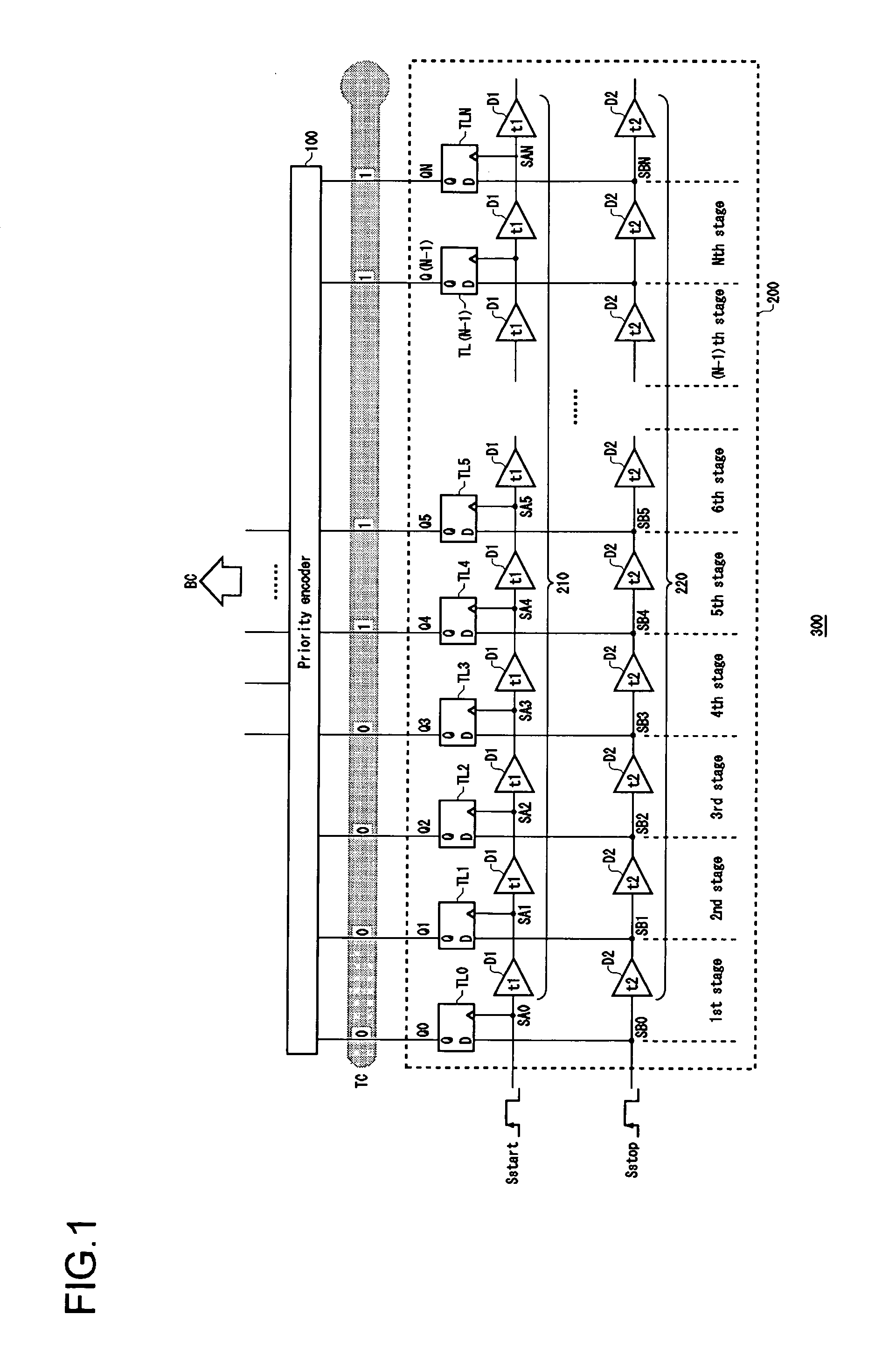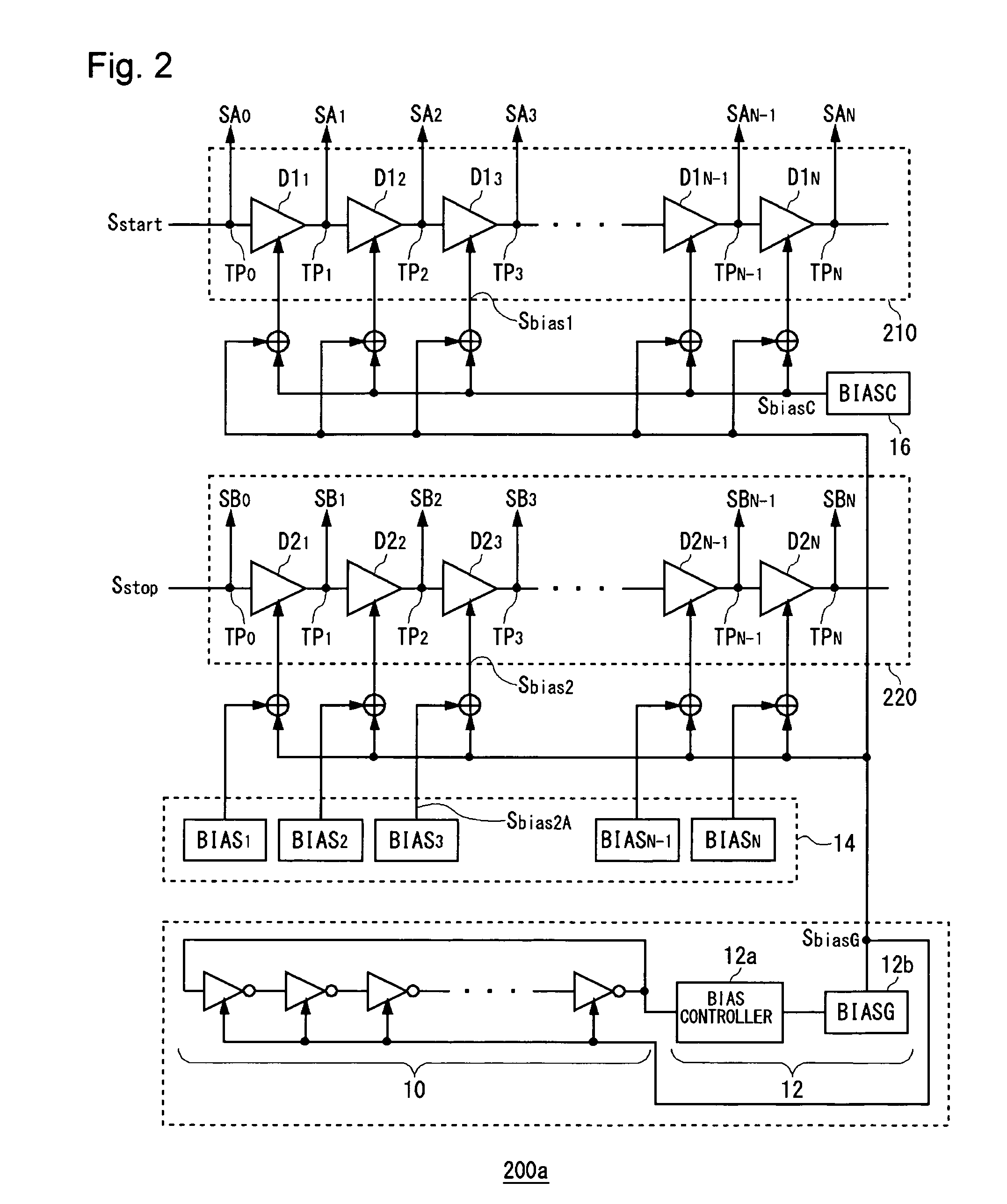Vernier delay circuit
a delay circuit and delay technology, applied in the direction of pulse manipulation, pulse automatic control, pulse technique, etc., can solve the problem of unreachable resolution and achieve the effect of high-precision calibration
- Summary
- Abstract
- Description
- Claims
- Application Information
AI Technical Summary
Benefits of technology
Problems solved by technology
Method used
Image
Examples
first embodiment
[0038]FIG. 2 is a block diagram showing the structure of a Vernier delay circuit 200a according to the first embodiment. The Vernier delay circuit 200a is suitably used in the TDC 300 of FIG. 1. The TDC 300 is provided in test apparatuses like automatic test equipment (ATE), time interval analyzers, and jitter measuring devices.
[0039]The Vernier delay circuit 200a of FIG. 2 receives a start signal (first signal) Sstart and a stop signal (second signal) Sstop and provides different multi-stage delays to the two signals.
[0040]The Vernier delay circuit 200 comprises a first delay circuit 210, a second delay circuit 220, a ring oscillator 10, a bias signal adjusting unit 12, an individual bias circuit 14, and a common bias circuit 16.
[0041]The first delay circuit 210 includes a total of N first variable delay elements D11-D1N connected to form multiple stages, where N denotes a natural number. The variable delay elements D11-D1N provide a delay determined by bias signals Sbias11-Sbias1N...
second embodiment
[0059]In addition to the function of the Vernier delay circuit 200a, the Vernier delay circuit 200b according to the second embodiment is provided with the function of suitably calibrating the differential delay Δt.
[0060]FIG. 6 is a circuit diagram showing the structure of the Vernier delay circuit 200b according to the second embodiment. FIG. 6 does not show the ring oscillator 10 or the bias signal adjusting unit 12.
[0061]In addition to the features of the Vernier delay circuit 200a of FIG. 2, the Vernier delay circuit 200b comprises a first tap selector 20, a second tap selector 22, a loop input selector 24, a frequency counter 26, an inverter 28, a first input selector 30, a second input selector 32, and a controller 34.
[0062]The first tap selector 20 receives a plurality of first delayed start signals SA0-SAN output from the first delay circuit 210, and selects and outputs one of the signals. The second tap selector 22 receives the plurality of second delayed start signals SB0-...
PUM
 Login to View More
Login to View More Abstract
Description
Claims
Application Information
 Login to View More
Login to View More - R&D
- Intellectual Property
- Life Sciences
- Materials
- Tech Scout
- Unparalleled Data Quality
- Higher Quality Content
- 60% Fewer Hallucinations
Browse by: Latest US Patents, China's latest patents, Technical Efficacy Thesaurus, Application Domain, Technology Topic, Popular Technical Reports.
© 2025 PatSnap. All rights reserved.Legal|Privacy policy|Modern Slavery Act Transparency Statement|Sitemap|About US| Contact US: help@patsnap.com



